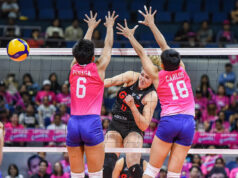In the year 2018 rapid and blitz chess have become more popular than ever before. Even in the Grand Chess Tour there were two legs out of the five total which feature exclusively the quicker time controls.
The Kramnik-Topalov world championship match in 2006, Anand vs Gelfand in 2012 and Carlsen-Karjakin 2016 and Carlsen-Caruana 2018 were all decided in the rapid tiebreaks, the latter match because all of the 12 standard games ended in draws, the first time it ever happened.
The just-concluded World Rapid and Blitz Championships in St. Petersburg saw a huge prize fund and thousands of spectators every day during the competition.
Daniil Dubov won the Rapid World Championship with 11/15 ahead of Shakhriyar Mamedyarov, Hikaru Nakamura, Vladislav Artemiev and Magnus Carlsen with 10.5/15. On tiebreaks Mamedyarov and Nakamura were awarded the silver and bronze, respectively. Magnus Carlsen won the blitz section with 17/21, a half point ahead of Poland’s Jan-Krzysztof Duda who chased him all the way and just fell short. As in the rapid portion Hikaru Nakamura took 3rd place.
Top earner was Magnus Carlsen. His rapid earnings ($36,250) added to his blitz win ($60,000) and the special $20,000 first prize for the best combined performance came out to $116,250 for the five-day tournament, approximately P6.1 million.
In the women’s section reigning Women’s World Champion Ju Wenjun won the Rapid Section with Iran’s Sarasadat Khademalsharieh and Aleksandra Goryachkina trailing one full point behind. Kateryna Lagno (Russia) won the women’s blitz ahead of Khademalsharief and China’s Lei Tingjie.
Top money-earned in the women’s side is IM Sarasadat Khademalsharieh who got $25,000 for tying for 2nd-3rd in the rapid and 30,000 for solo second in the blitz. These two, added to the $14,000 she received as the first combined in the women’s section totaled $69,000, approximately P3.6 million, not bad at all.
Never heard of Khademalsharieh? Well, that is precisely what this article is about.
She is also known as Sara Khadem or, the long version, Sara-sadat Khadem Al-Sharieh. Sara was born March 10, 1997 in Tehran, Iran. I first heard about her at the 2016 Tehran Grand Prix. Since the tournament was held in Tehran the organizers were entitled to nominate one player, and that was Sara. She was only 19 years old and the lowest rated player in the field but her play was a revelation and she came close to overall victory — in fact, Sara entered the final round as co-leader but a loss to Ukraine’s Natalia Zhukova knocked her down to shared second place with Zhao Xue (China). Nevertheless, the second place was quite a terrific accomplishment (Ju Wenjun won the event).
And then there is the famous “hijab controversy” during the 2017 Women’s World Championship held in Tehran. It all started when the American chess champion, Nazi Paikidze (an immigrant from Georgia), said she would boycott the games on grounds that female participants would need to wear the “hijab,” or head scarf, which is mandatory for women in Iran. She started an online petition to “stop women’s oppression” and to challenge the chess federation’s decision.
The media of course ate this up and there was even a movement to remove Tehran as host of the championships.
Sara Khadem was one of Iran’s women players who spoke up that the proposed boycott to “stop women’s oppression” is not what Iran’s players want. Participating in international games, and hosting them, she says, only works to give Iranian women opportunities, which many have had to fight bitterly for. “It’s had such a huge effect on me, to play around the world,” she said. “And it is a great encouragement to Iranian young women to have foreign players come here, their presence is so considerable.”
This whole thing seemed rather stupid to me. Aren’t guests supposed to show respect to the host by observing their cultural traditions? In the same way a woman should take off her shoes before entering a Hindu temple or remove her hat in a Christian church, what’s wrong with asking women to wear a hijab, which is just a light scarf? The male chauvinist pig in me also notes that many women actually look very good in hijabs. Any female visitor to Iran is asked to wear a hijab, so what’s the big deal? If Nazi doesn’t agree with it, then a personal boycott is ok. Why call for everybody else to boycott? Sheesh.
The good news is that the women’s world chess championship pushed through in Tehran and the Chinese GM Tan Zhongyi (a recent Philippine visitor who took part in the Asian Continental Chess Championship last December) won.
OK, now that we know a little bit more of Sarasadat let us look at her chess.
Khademalsharieh, Sarasadat (2470) — Arabidze, Meri (2387) [D25]
FIDE Wch Rapid w St. Petersburg (8.10), 27.12.2018
1.d4 d5 2.c4 dxc4 3.e3 Nf6 4.Nf3 Bg4 5.Bxc4 e6 6.Nc3 Nbd7 7.h3 Bh5 8.g4
IM Sara-sadat Khadem Al-Sharieh has a very sweet smile and pleasant countenance but don’t let that fool you — over the board she is a very active player geared to the attack. There are many ways to proceed for White in this position but she goes for the most aggressive setup: castle queenside and then a kingside pawn-storm. Before that though she has to get rid of Black’s light-squared bishop as after queenside castling an enemy bishop on g6 will be very inconvenient.
8…Bg6 9.Nh4 c6 10.Nxg6 hxg6 11.Bd2
The Russian-Israeli IM Ilya Tsesarsky played 11.Qf3! to facilitate queenside castling. Then after 11…Be7 12.Bd2 a6 13.Bb3 Nd5 14.e4 Nc7 (maybe she should have just taken the c3–knight) 15.0–0–0 Bg5 16.Qg3! Bxd2+ 17.Rxd2 Qb8!? 18.f4 White’s offensive is already looking very scary. I want you to see how this game ended: 18…Nb5 19.e5!? c5 (White was going to follow-up with Ne4, so Black gets in this move at once) 20.d5 exd5 21.Bxd5 Nb6 22.e6 Nxd5 23.Nxd5 fxe6 24.Re1 Nd4 25.Rxd4! cxd4 26.Rxe6+ Kf8 27.Qa3+ Kg8 28.Ne7+ Kf7 29.Qb3 Qe8 30.Re5+ Kf8 31.Qe6 1–0. Tsesarsky,I (2458)-Zifroni,D (2531) Ramat Aviv 2000.
11…Nb6 12.Bb3 a5 13.a3 Be7 14.Kf1 Kf8 15.Kg2 c5 16.Qf3 a4
“Winning” the d4 pawn won’t work: 16…cxd4 17.exd4 Qxd4? 18.Be3 is very awkward for Black. If you want we can carry the analysis for a few more moves: 18…Qd6 19.Rhd1 Nfd5 (19…Qc7 20.Rac1) 20.Nxd5 Nxd5 21.Rac1 with Bc5 coming up, Black is in a bind.
17.Ba2 Kg8 18.Rad1 cxd4 19.Bc1 d3 20.Qxb7 Rb8 21.Qa6 Qc7 22.Qxd3 Qc6+ 23.e4 Nfd7 24.Bf4 Rb7 25.Qb5 Qc8
Exchanging queens 25…Qxb5 26.Nxb5 leaves White in the driver’s seat with no counterplay in sight.
26.Qe2 Qc6 27.Rd2 Kh7 28.Rhd1 Bf6 29.Rd6 Qc5 <D>
POSITION AFTER 29…QC5
30.e5! Nxe5?
The alternative is 30…Be7 even though it still leads to a miserable game after 31.Ne4! Qc7 32.Ng5+ Bxg5 (32…Kg8? 33.Nxe6!) 33.Bxg5.
31.Ne4 Qa5 32.Bd2 Qa8 33.Bc3
Threatening Bxe5, Bxe5, Ng5+
33…Ned7 34.Qf3 Bxc3 35.Ng5+ Kh6
[35…Kg8 36.Qxf7#]
36.Nxf7+ Kh7 37.Nxh8 Be5 38.Rxd7 Rxd7 39.Qxa8 Rxd1 40.Qe4 1–0
It is a complete rout.
Khademalsharieh, Sarasadat (2470) — Galliamova, Alisa (2444) [D30]
FIDE Wch Blitz w St. Petersburg (13.5), 30.12.2018
1.d4 d5 2.c4 c6 3.Nf3 Nf6 4.e3 e6 5.b3
The problem with rapid and blitz tournaments is that there is hardly any time to study your opponents’ opening repertoire and prepare your plan of attack based on that. IM Sara has had this opening formation six times previously. she won five and drew one. In most games she put one bishop on d3, another bishop on b2, castled kingside, then Qe2 after which, depending on Black’s formation, White plays e3–e4 or Nf3–e5 and f2–f4 and then goes for a kingside attack. Simple but very effective.
5…Nbd7
Here is what might happen if Black just develops pieces without a general plan to counter White’s initiative. 5…Be7 6.Bd3 b6 7.0–0 Bb7 8.Bb2 Nbd7 9.Nc3 0–0 10.Qe2 c5 11.Rad1 cxd4 12.exd4 Rc8 13.Ne5 dxc4 14.bxc4 Qc7 15.Nb5 Qb8 16.d5 Nc5 (16…exd5 17.Nxd7) 17.d6 Bd8 18.Bb1 a6 19.d7 Ncxd7 20.Nxd7 Nxd7 21.Rxd7 axb5 22.Qh5 h6 23.Bxg7! 1–0 (23) Khademalsharieh,S (2423)-Sedaghati,M (2337) Teheran 2016 (23.Bxg7 Kxg7 24.Qg6+ Kh8 25.Qh7#)
6.Bd3 Bb4+ 7.Nbd2 Ne4 8.0–0 Nxd2 9.Bxd2 Bd6 10.e4 dxe4 11.Bxe4 h6
A pointless move. The Greek Gift Sacrifice 11…0–0 12.Bxh7+ Kxh7 13.Ng5+ Kg8 14.Qh5 does not work because Black has 14…Nf6. However, you see this move a lot in blitz games because you don’t want to waste time calculating Bxh7+
12.Bc3 0–0 13.Re1 Nf6 14.Bc2 c5 15.Qd3
Take a long look at White’s attacking formation. This is deadly and almost winning already. There is a mating threat on h7 which is prevented by the Nf6, so White can either attack it by d4–d5 followed by Bxf6 or Nf3–e5–g4. However, at present Black has ways to defend against these maneuvers so you have to prepare it. IM Sara’s execution is most efficient.
15…cxd4 16.Bxd4 Be7
16…Bc7 is better so as to be able to chop off the White knight when it lands on e5.
17.Rad1
I do not see a defense for Black anymore.
17…b6 18.Ne5 Bb7 19.Ng4 g6
[19…Re8 20.Rxe6! fxe6 21.Nxh6+ gxh6 22.Qg6+ it’s game over — mate follows]
20.Nxh6+ Kg7 21.Nxf7 Rxf7 22.Qxg6+ Kf8 23.Bxf6 Qc7 24.Qh6+ Ke8 25.Qh8+ Bf8 26.Rxe6+ 1–0
Nothing much you can say about that, she’s really got the goods. Enough, I daresay, to become woman’s world chess champion in a few years.
Bobby Ang is a founding member of the National Chess Federation of the Philippines (NCFP) and its first Executive Director. A Certified Public Accountant (CPA), he taught accounting in the University of Santo Tomas (UST) for 25 years and is currently Chief Audit Executive of the Equicom Group of Companies.
bobby@cpamd.net



